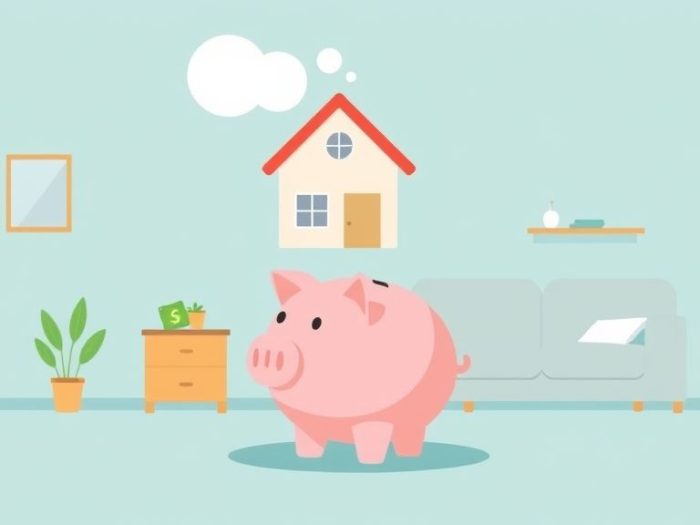Saving for a house down payment while paying rent can feel like a daunting task.
However, with a strategic plan and disciplined approach, it’s achievable. This
article provides a comprehensive guide on how to save for a down payment while
renting, helping you reach your homeownership goals.
Understanding the Down Payment
A down payment is the initial amount of money you pay when purchasing a home. It’s
typically a percentage of the home’s purchase price.
Factors Affecting Down Payment Amount
-
Loan Type: Different loan types (e.g., conventional, FHA) have
varying down payment requirements. -
Lender Requirements: Lenders may have specific requirements based
on your credit score and financial situation. -
Property Location: Down payment amounts can vary depending on the
local real estate market.
Steps to Save for a Down Payment While Renting
1. Set a Realistic Savings Goal
Determine how much you need to save for your down payment. Consider:
- Target Home Price: Research the average home prices in your desired area.
- Desired Loan Type: Research the down payment requirements for different loan types.
- Additional Costs: Factor in closing costs, moving expenses, and potential repairs.
2. Create a Detailed Budget
Develop a detailed budget that tracks your income and expenses.
- Track Your Spending: Use a budgeting app, spreadsheet, or notebook to monitor your spending.
- Categorize Expenses: Identify essential and non-essential expenses.
- Calculate Savings Potential: Determine how much you can realistically save each month.
3. Reduce Expenses
Identify areas where you can cut back on spending.
- Dining Out: Reduce the frequency of eating out.
- Entertainment: Find free or low-cost entertainment options.
- Subscriptions: Cancel unused subscriptions.
- Transportation: Explore cheaper transportation options.
4. Increase Income (Optional but Recommended)
Increasing your income can significantly accelerate your savings progress.
- Side Hustle: Consider a part-time job, freelancing, or other income-generating activities.
- Negotiate Salary: If possible, negotiate a raise at your current job.
5. Automate Your Savings
Set up automatic transfers to your savings account to ensure consistent contributions.
6. Choose the Right Savings Account
Select a high-yield savings account (HYSA) to maximize interest earned.
7. Track Your Progress
Monitor your savings progress regularly to stay motivated.
Example Timeline
(This is a simplified example. Adjust based on your income and expenses.)
- Month 1: Set savings goal, create a budget, open a HYSA.
- Month 2: Reduce expenses, automate savings.
- Month 3: Track progress, adjust budget if needed.
- Month 4: Explore income-increasing options.
- Month 5: Continue saving, review savings strategies.
- Month 6+: Stay disciplined, reach your goal.
Accelerating Your Savings
Consider these strategies to save faster:
- The Snowball Method: Focus on paying off smaller debts first to free up cash flow.
- The Avalanche Method: Focus on paying off high-interest debts first to save on interest.
- Reduce Rent: If feasible, consider moving to a cheaper apartment.
- Cut Back on Unnecessary Spending: Identify and eliminate unnecessary expenses.
Important Considerations
- Patience: Saving for a down payment takes time and discipline.
- Flexibility: Be prepared to adjust your plan if circumstances change.
- Motivation: Stay focused on your goal and visualize the benefits of homeownership.
Conclusion
Saving for a house down payment while renting is challenging but achievable. By
setting a realistic goal, creating a budget, reducing expenses, and staying
disciplined, you can reach your homeownership dreams.
Related Keywords
Save for down payment, down payment savings plan, save for a house while renting,
house down payment, down payment goal, budgeting for a house, high-yield savings
account, debt snowball, debt avalanche, homeownership.
Frequently Asked Questions (FAQ)
1. What is a down payment?
A down payment is the initial amount of money you pay when purchasing a home.
2. How much should I save for a down payment?
The amount varies depending on the loan type, lender requirements, and property location.
3. What are the steps to save for a down payment while renting?
The steps include setting a realistic savings goal, creating a budget, reducing expenses, increasing income (optional), automating savings, choosing the right savings account, and tracking your progress.
4. How can I create a realistic budget?
Create a budget by tracking your spending, categorizing expenses, and calculating how much you can realistically save each month.
5. What are some ways to reduce my expenses?
You can reduce expenses by limiting dining out, finding cheaper entertainment options, canceling unused subscriptions, and exploring cheaper transportation.
6. How can I increase my income to save faster?
Consider a side hustle, negotiating a salary raise, or selling unused items.
7. What is the best type of savings account for a down payment?
A high-yield savings account (HYSA) is recommended to maximize interest earned.
8. What are the debt snowball and debt avalanche methods?
The debt snowball method focuses on paying off smaller debts first, while the debt avalanche method focuses on paying off high-interest debts first.
9. How important is it to stay motivated while saving for a down payment?
Staying motivated is crucial, as saving for a down payment takes time and discipline. Visualize your goal and celebrate small victories.
10. Is it realistic to expect to save for a down payment quickly?
While it’s possible to save quickly, it’s generally a process that takes time. Be patient and consistent with your savings plan.



